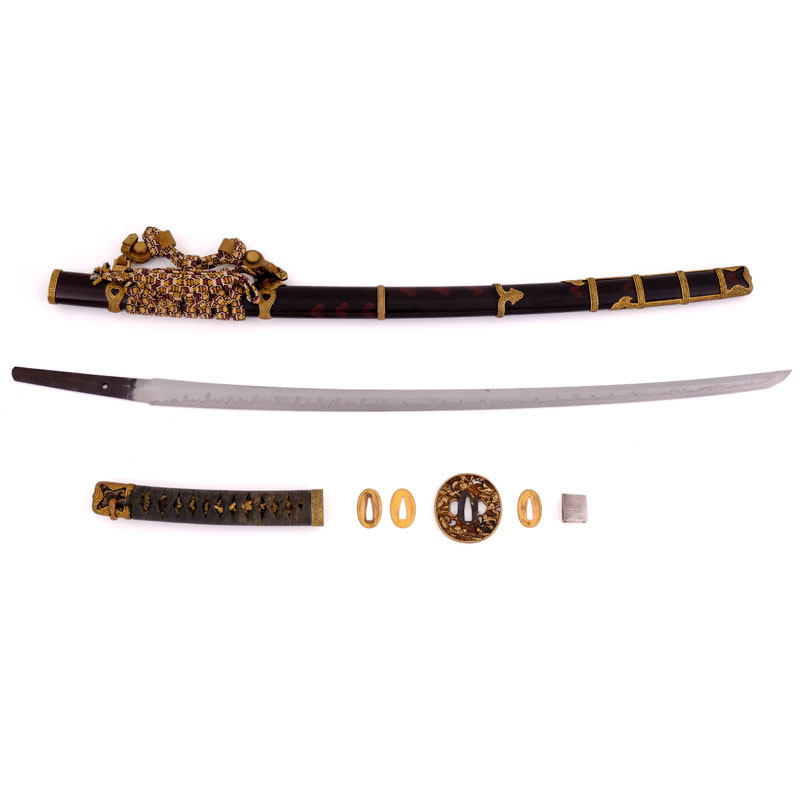





















More informations about this product
| Total Weight | 1.598 kg | |
| Weight without Saya | 1.072 kg | |
| Blade Weight | 0.685 kg | |
| Full Blade length (Toshin) | 89.90 cm | |
| Nagasa | 73.70 cm | |
| Nakago Length | 16.20 cm | |
| Sori (curvature) | 3.20 cm | |
| Kissaki Length | 1.81 cm | |
| Moto Haba | 3.20 cm | |
| Saki Haba | 1.90 cm | |
| Moto Kasane | >A = 0.69 cm B = 0.70 cm |
|
| Saki Kasane | A = 0.43 cm B = 0.45 cm |
|
| Curvature | Tori Zori with Funbari at the base | |
| Type Kissaki | Chu Kissaki | |
| Blade Structure | Shinogi Zukuri (diamond shaped) | |
| Mune | Iori Mune (triangular) | |
| Hamon | Sanbontsugi (Type Magoroku Kanemoto, Mino Den) with rounded peaks brushing the Shinogi, presence of Sunagashi, Ashi, Yo | |
| Hada | Itame Hada | |
| Boshi | Ko-Maru Kaeri | |
| Nakago | Length 16.2cm, Ubu (original), Mumei (unsigned), 1 Mekugi Ana, Yasurime Katte Sagari (slightly inclined), Futsu Gata shape, Ha Agari Kurijiri end (U dissymmetric). | |
| Saya | Weight of 525g for a length of 81.3 cm, Tachi assembly with Sayajiri, Samegane, Ashi and Koiguchi in golden copper with Ishime relief. Urushi lacquer, dark burgundy red with repeated rounded patterns in relief. Multicolored silk sageo with 'tortoiseshell' pattern. | |
| Tsuka & Tosogu (Tsuba, Menuki, Fuchi Kashira) |
- Tsuka: length of 25.5cm for a weight of 162g. Black silk Tsumami Maki weave. Silk brocade under the weave. - Menuki : Golden Ryu representing a Dragon - Tsuba : L 7.55 x h 8.0 x th 0.45 cm, Naga Maru Gata Shape (oval), presence of Kogai and Kozuka Hana, Hikone Bori type pattern (deep openings and chiselling), representation of a Dragon in the clouds, a warrior and a sage reading texts. - Fuchi and Kabutogane: golden with relief - Habaki: Weight of 31g, Habaki in silver with vertical Nekogaki - Seppa: 3 Seppa (36g) crenelated in golden copper. |
|
| Study & Team Review |
The blacksmith line Katsukuni was located in the province of Kaga, now Ishikawa Prefecture. She was also called Darani Katsukuni 陀羅尼 勝国. |
|
Share your opinion
error Your review appreciation cannot be sent
feedback Report comment
check_circle Report sent
error Your report cannot be sent